Leah and I both want a nice yard with lots of pretty shrubbery. Although we don’t particularly want a large lawn, our front yard is also our septic system leach field, so we don’t have many options for ground cover. It looks like it’s going to be grass.
The first decision was what type of grass to grow. The county agricultural extension agent immediately suggested Bermuda grass, because it’s fast growing, it spreads, and it’s drought resistant. Fast growing means it has to be mowed often, and I really, really don’t want to mow a lawn every week, or even twice a week. The other option was zoysia grass. Zoysia is slow growing and drought resistant. Slow growing is great for less mowing, or, depending on how you want your yard to look, no mowing at all. But slow growing also means it takes a while to establish, unless you buy sod. Sod would require regular, deep watering, while seed would require regular, shallow watering (at least at first). In the end we decided to try to seed the lawn with zoysia..
I picked a very hot, dry day to start raking the middle 3000 square feet in front of the house to clear the wheat straw and rocks. Then I dug into a pile of dirt the grading contractor left in the front yard to fill the low spots and gullies. I shoveled the dirt into the bed of our Mule, a side-by-side four-wheeler, and hauled it to where it was needed. The pile probably had about five cubic yards of dirt, all of which I moved with a shovel.
Next I had about nine cubic yards of mushroom compost delivered. It also had to be shoveled into the Mule’s little bed so I could spread it about an inch deep everywhere we plan to seed. Once that’s done, I’ll rent a big tiller and try to incorporate it into the soil.
Here’s the mule resting, while I supervise from the porch. The compost is piled to the right of the Mule.
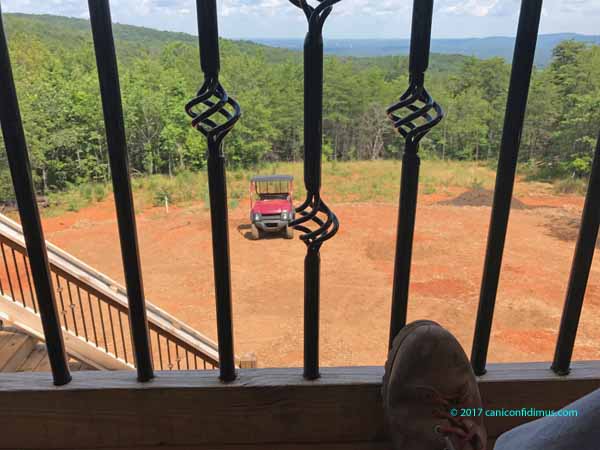
Filling in the low spots and spreading the compost took most of three days, all of which were sunny and near 90 F.
Most of the topsoil was removed from the front yard during construction, leaving us with sandy clay with lots of rock but absolutely no organic material. I’ll till the compost into the soil, but it will still need to be augmented with some decent topsoil, so I had 18 cubic yards delivered on Wednesday afternoon.
We were having a little problem getting the last of the soil to slide out of the dumptruck, and I joked that at least it was easier than shoveling it all out. Then it occurred to me that I actually am going to have to move all those 18 cubic yards with a shovel.
At this point, Thursday night, I still have a little compost left to spread. Although nine cubic yards will cover almost 3000 square feet at one inch depth, I think I’m going to end up covering around 2500 square feet.
This is the yard with most of the compost spread.
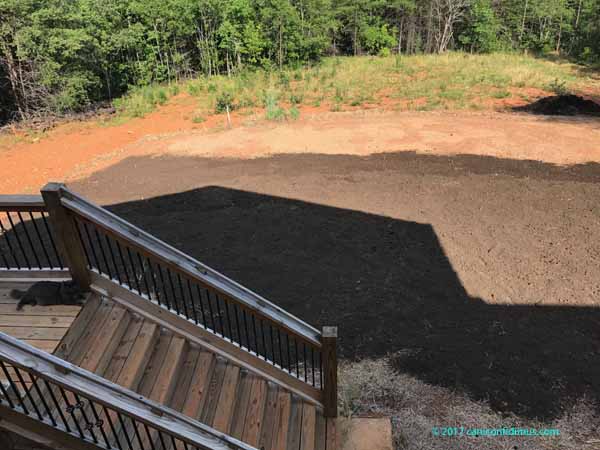
The shadow of the house makes it look like we have rich, black soil, but that’s an illusion. The red clay above the darker compost slopes down so it doesn’t look like as large an area as it actually is.
The next steps are tilling the compost into the ground, spreading two inches of topsoil, and then sowing the zoysia seed.
As of Thursday, I don’t have the topsoil spread, or the seed sown. The zoysia seed must be kept moist for about three weeks. Regular gentle showers would be nice once the seed is sown, but I don’t want rain right now. So Thursday afternoon a large line of thunderstorms formed and was moving towards us from Alabama. Fortunately, I had put plastic over the topsoil and the remaining compost, just in case.
This is what it looked like as the rain moved across Alabama. The red push pin is our house.It looked like we were in for some heavy rain.
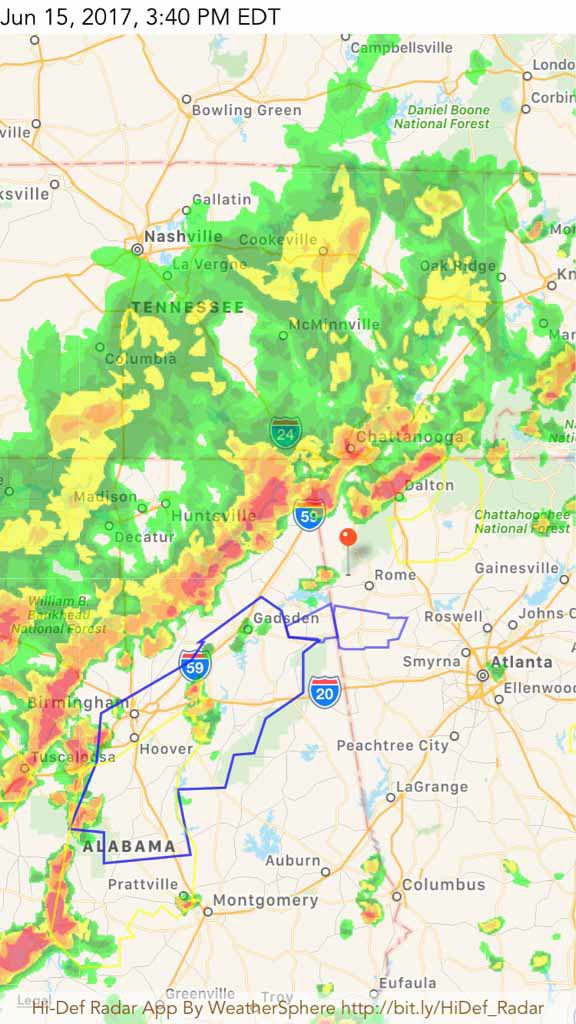
A little while after this radar image was made, the sky darkened and the wind picked up and began to roar through Fouche Gap. Rain began to fall. The plastic over the compost and topsoil started flapping and I had to put more rocks along the sides. I retreated back inside and waited for the rain. A little while after that, this is what the radar looked like.
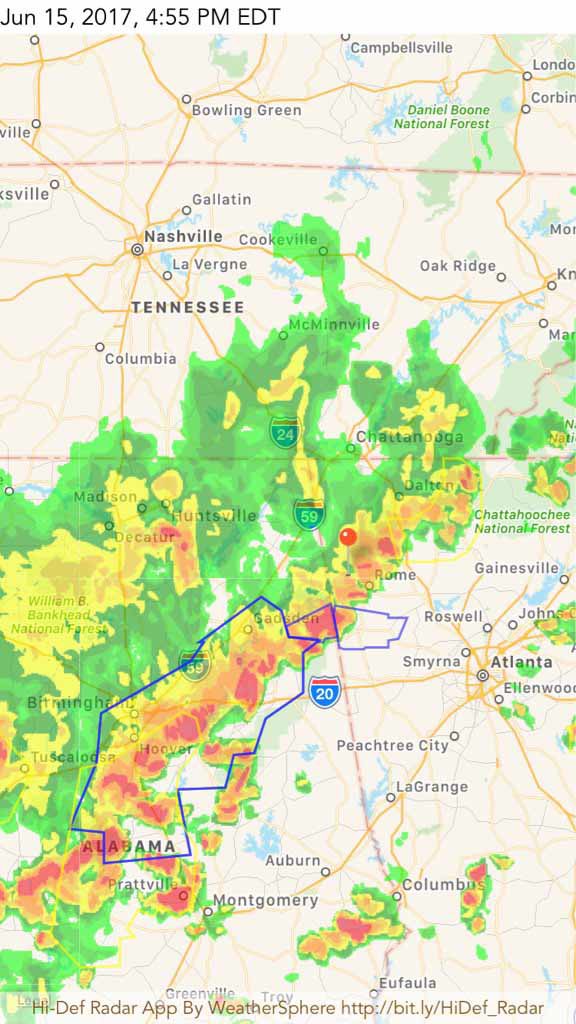
It looks like we’re in some fairly heavy rain, but we weren’t. The sea of red had parted and passed on either side of us.
And then, after the line of thunderstorms had passed, this is what it looked like.
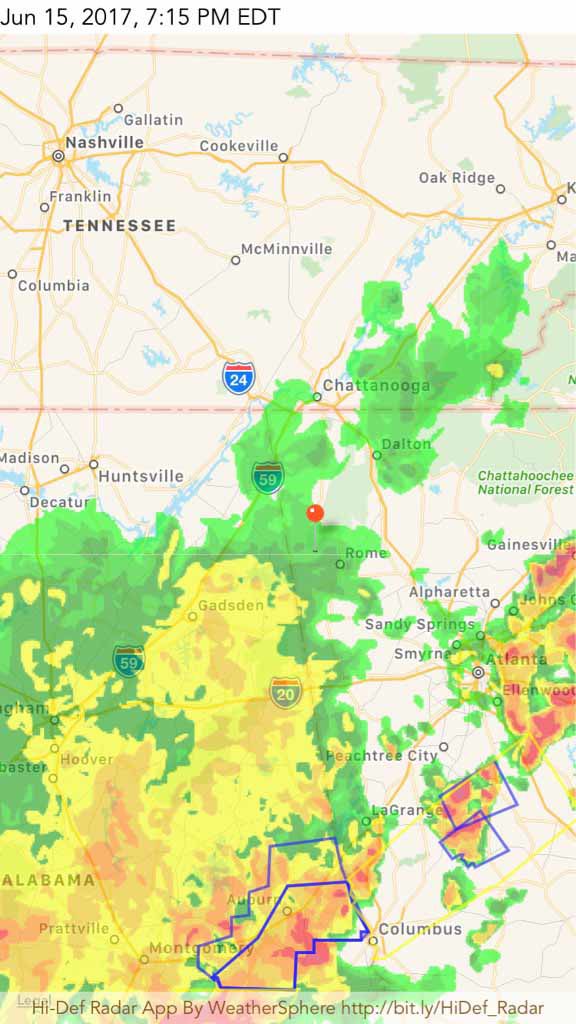
We had 0.06 inches of rain.
Here’s the front yard after the rain passed. Instead of water, it mostly deposited leaves torn from the trees.
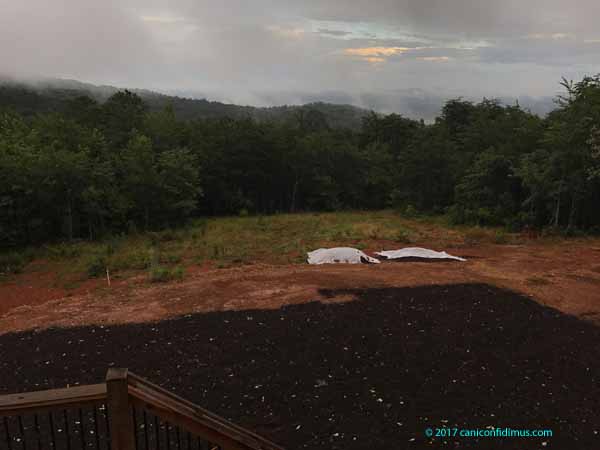
On the plus side, the temperature dropped from near 90 F to 68 F in about fifteen minutes.